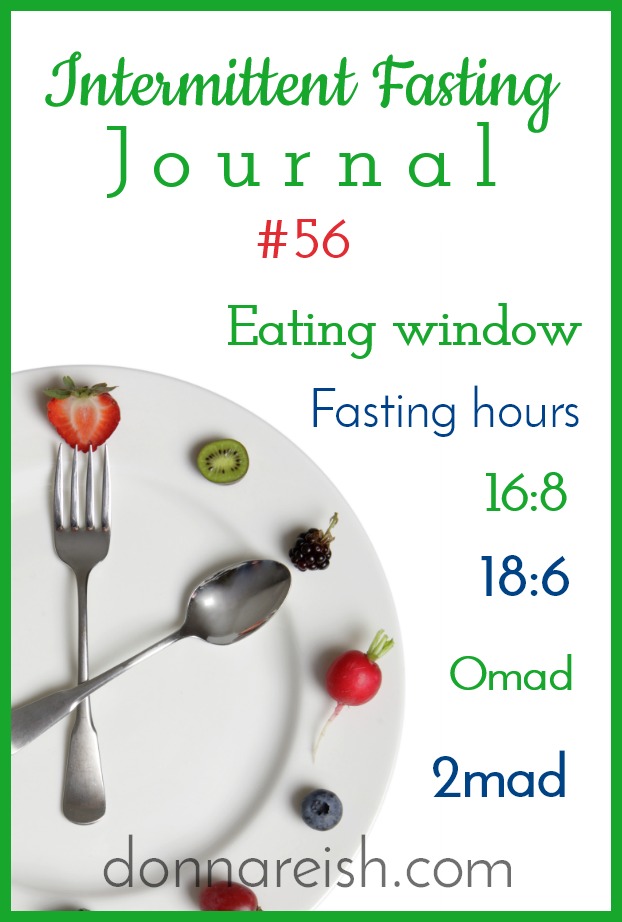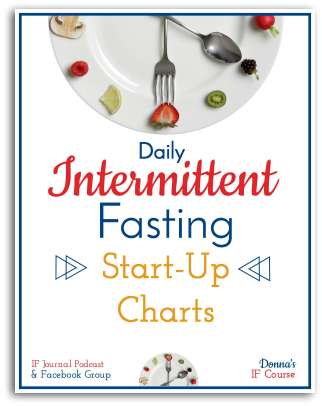
Should you focus on the length of the fasting period or the food in the eating window for weight loss? Does longer always mean better weight loss? Should you eat differently if you have a short fast or a long fast?
Donna Reish, Intermittent Fasting teacher, blogger, weight loss coach, and curriuculum author, answers these and many other questions in this broadcast. She begins with the “Is IF magic” question.
Then she uses graphics to show four main ways we lose weight, inches, and cravings through IF.
Then she turns her attention to various fasting hours–and their effect on the foods and weight loss. These include 16:8; 18:6; 19:5; 20:4; 21:3; and more.
Follow along with the outline below! 🙂
A. Is IF Magic?
1. The magic of IF is in its ability to
a. Reduce insulin so reduce hunger and cravings
b. Control hunger by controlling hunger and satiety hormones
c. Helping us to lose inches as the body goes into fat burning mode during the fast
d. Keeping all of our food intake in a shortened period of time, which controls total food intake and non-fuel eating (and lets us eat more at one time, which most find more satisfying)
2. Four ways we lose weight, inches, and cravings through IF (see charts below)
B. 16:8
1. Might barely be into fat burning mode depending on food eaten day before
2. Super healthy way to live
3. Eight hours is usually too long to eat and cause a caloric deficit unless there are other parameters in place like two meals only or certain eating protocols
C. 18:6, 19:5
1. Usually enough time to be into fat burning mode, again, depending on what you ate the day before
2. Easily sustainable after the first three weeks or so (body adapts, clock hunger, etc.)
3. Can still overeat! Especially if grazing or not eating real foods
4. Leptin (satiety hormone) often doesn’t recognize drinks, processed foods, etc (this is why people who lost to goal on IF usually eat real foods or a real food protocol)
5. Can be two meals; one snack and one meal, etc. for weight loss
D. 20:4, 21:3
1. Longer fasting gives body a chance to be in fat burning better, but not mandatory
2. Harder to sustain
3. Many people call this OMAD—though most do not just eat one meal but often eat throughout the eating window or a snack, then dinner, then dessert
4. Many OMAD people do OMAD so they can eat whatever they want -but might still have trouble getting to goal (last 10-20 pounds) if eating processed foods/calorie dense foods during your OMAD, especially if not truly only doing one meal
E. Many factors to consider—













I find it very very difficult to stick to a schedule as we have way too much socializing going on. How can I fit into this better and still be socialble?